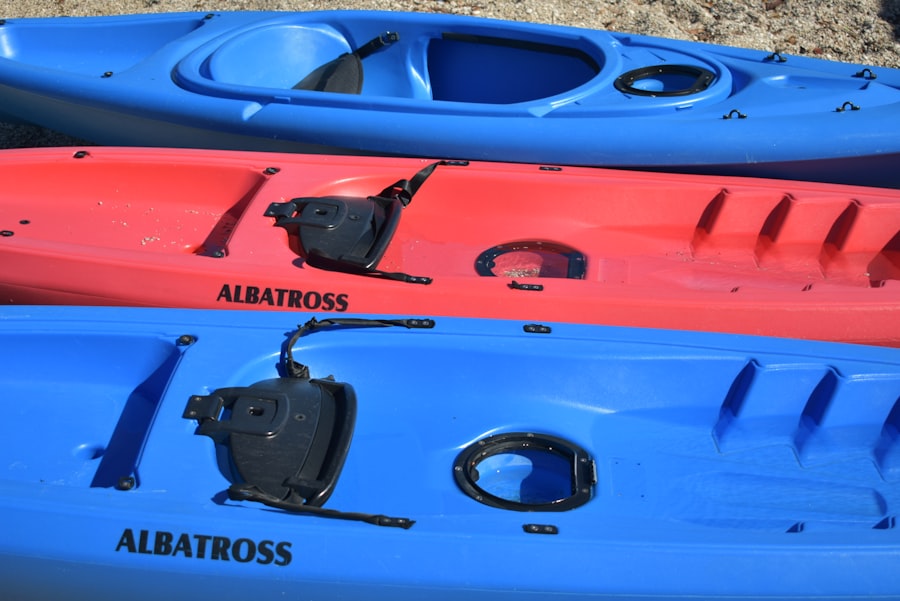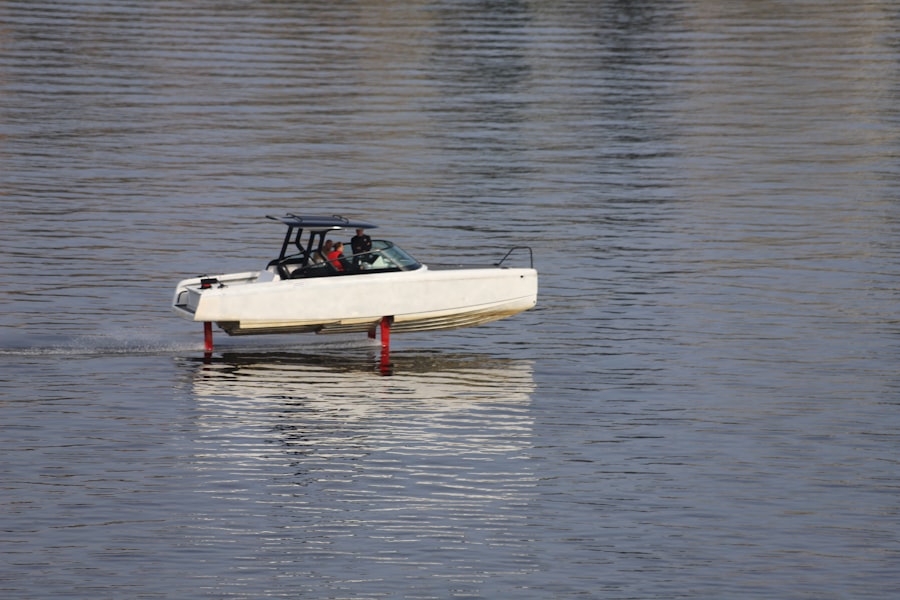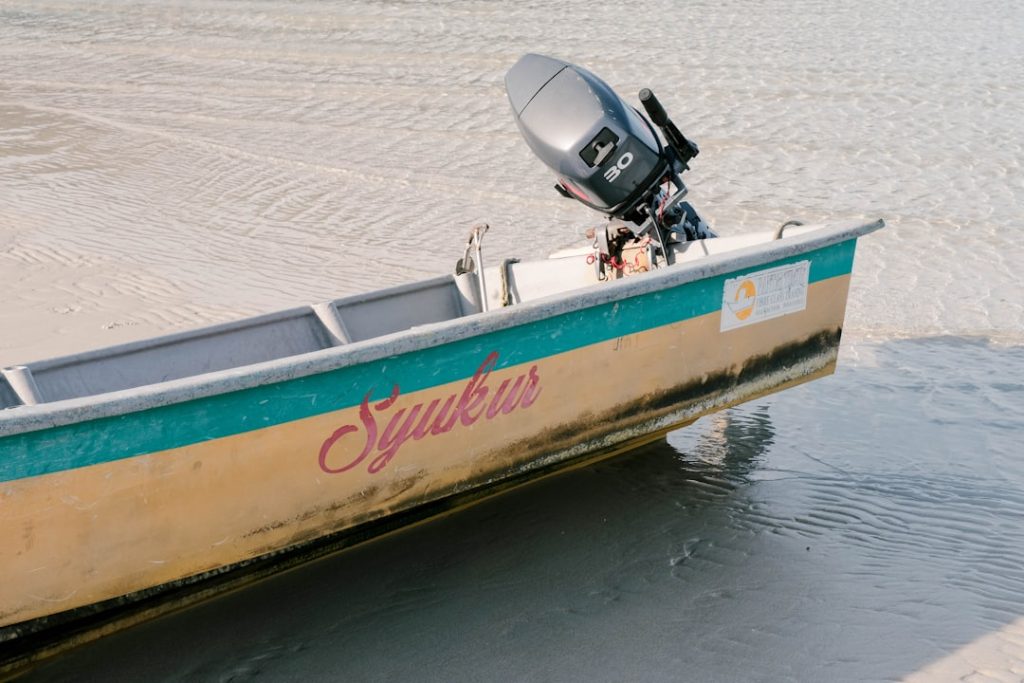Outboard motors are essential for powering boats, providing propulsion and steering capabilities. They come in various types, each designed to meet specific needs and preferences of boaters. The primary classifications of outboard motors include two-stroke and four-stroke engines.
Two-stroke outboards are known for their simplicity and lightweight design, making them ideal for smaller boats and applications where weight is a critical factor. These engines operate on a straightforward cycle, allowing for a higher power-to-weight ratio, which is particularly advantageous for speed enthusiasts. However, they tend to be less fuel-efficient and produce more emissions compared to their four-stroke counterparts.
On the other hand, four-stroke outboard motors have gained popularity due to their fuel efficiency and lower emissions. These engines operate on a more complex cycle, which includes separate intake, compression, power, and exhaust strokes. This design not only enhances fuel economy but also contributes to quieter operation, making them suitable for recreational boating where noise levels are a concern.
Additionally, four-stroke motors typically require less frequent maintenance and have a longer lifespan, making them a preferred choice for many boaters who prioritize reliability and sustainability.
Key Takeaways
- Outboard motors vary by type, power, and design, affecting performance and suitability.
- Key factors in choosing an outboard motor include engine size, fuel efficiency, and intended use.
- Leading brands offer reliable, high-quality outboard motors known for durability and performance.
- Regular maintenance and proper storage are essential to extend the lifespan of outboard motors.
- Upgrading to a high-quality outboard motor can improve efficiency, power, and overall boating experience.
Factors to Consider When Choosing an Outboard Motor
Selecting the right outboard motor involves several critical considerations that can significantly impact your boating experience. One of the foremost factors is the size and weight of the motor in relation to your boat. The horsepower rating of the motor should match the boat’s specifications to ensure optimal performance.
For instance, a small dinghy may only require a lightweight 2-5 horsepower motor, while larger vessels may necessitate motors with 150 horsepower or more. It is essential to consult the manufacturer’s recommendations for your specific boat model to avoid underpowering or overpowering the vessel. Another vital consideration is the intended use of the boat.
If you plan to use your boat for fishing in calm waters, a smaller, more fuel-efficient motor may suffice. Conversely, if you intend to navigate rough seas or require high speeds for water sports, investing in a more powerful outboard motor would be prudent. Additionally, consider the type of fuel you prefer; while most outboards run on gasoline, some models are designed for alternative fuels or have hybrid options that can enhance efficiency and reduce environmental impact.
Top Brands and Models of High-Quality Outboard Motors

When it comes to high-quality outboard motors, several brands have established themselves as leaders in the industry due to their reliability, performance, and innovation. Yamaha is one such brand that has garnered a loyal following among boaters. Their F-series four-stroke outboards are particularly well-regarded for their smooth operation and advanced technology, including features like variable camshaft timing that optimizes performance across various RPM ranges.
The Yamaha F150, for example, is celebrated for its balance of power and efficiency, making it a popular choice among recreational boaters. Another prominent brand is Mercury Marine, known for its robust lineup of outboard motors that cater to both casual and professional users. The Mercury Pro XS series is designed specifically for high-performance applications, offering impressive acceleration and speed without compromising fuel efficiency.
The Pro XS 250 is a standout model that combines cutting-edge engineering with durability, making it suitable for competitive fishing and water sports enthusiasts alike. Additionally, Honda Marine has made significant strides in the outboard market with its BF series, which emphasizes quiet operation and fuel efficiency while maintaining a reputation for reliability.
Where to Find High-Quality Outboard Motors for Sale
| Source | Type of Motors Available | Price Range | Warranty | Customer Rating | Additional Services |
|---|---|---|---|---|---|
| Authorized Dealerships | New, OEM Motors | 1500 – 8000 | 3-5 years | 4.5/5 | Installation, Maintenance |
| Online Marketplaces (eBay, Amazon) | New & Used Motors | 800 – 6000 | Varies by seller | 4.0/5 | Return Policy, Buyer Protection |
| Boat Shows & Expos | New Models, Demo Units | 2000 – 9000 | Manufacturer Warranty | 4.7/5 | On-site Discounts, Expert Advice |
| Local Marine Shops | New & Refurbished Motors | 1200 – 7000 | 1-3 years | 4.3/5 | Repair Services, Custom Fitting |
| Classified Ads & Forums | Used Motors | 500 – 4000 | None or Limited | 3.8/5 | Peer Reviews, Negotiable Prices |
Finding high-quality outboard motors for sale can be accomplished through various channels, each offering unique advantages. One of the most reliable sources is authorized dealerships that specialize in marine equipment. These dealerships often carry a wide range of brands and models, providing customers with the opportunity to compare features and prices in person.
Additionally, purchasing from an authorized dealer typically ensures that you receive genuine products along with warranty support and expert advice from knowledgeable staff. Online marketplaces have also become increasingly popular for buying outboard motors. Websites like eBay, Amazon, and specialized marine equipment sites offer extensive listings of new and used motors at competitive prices.
When shopping online, it is crucial to verify the seller’s reputation and read customer reviews to ensure you are making a sound investment. Furthermore, local classified ads or community bulletin boards can yield hidden gems; many boaters sell their motors when upgrading or downsizing their vessels. However, it is advisable to inspect any used motor thoroughly before purchase to assess its condition and performance history.
The Importance of Regular Maintenance for Outboard Motors
Regular maintenance is paramount for ensuring the longevity and optimal performance of outboard motors. Just like any mechanical device, neglecting maintenance can lead to decreased efficiency, increased fuel consumption, and ultimately costly repairs. Routine tasks such as changing the oil and filter, inspecting the fuel system, and checking the propeller for damage are essential components of an effective maintenance regimen.
For instance, changing the oil regularly helps prevent engine wear by removing contaminants that accumulate over time. Additionally, seasonal maintenance checks are crucial before launching your boat each year. This includes inspecting electrical connections, testing the battery’s charge, and ensuring that all safety equipment is in working order.
A thorough inspection can help identify potential issues before they escalate into significant problems on the water. Moreover, many manufacturers provide detailed maintenance schedules tailored to specific models; adhering to these guidelines can help maintain warranty coverage while ensuring your motor operates at peak performance.
Tips for Extending the Lifespan of Your Outboard Motor

Extending the lifespan of your outboard motor requires proactive care and attention beyond routine maintenance. One effective strategy is to operate the motor within its recommended RPM range. Running an outboard at excessively high RPMs can lead to overheating and increased wear on engine components.
Conversely, consistently operating at low RPMs may result in carbon buildup and inefficient combustion. Understanding your motor’s optimal operating range can help strike a balance between performance and longevity. Another critical aspect is proper flushing after use in saltwater environments.
Saltwater can be corrosive to engine components if not rinsed away promptly after each outing. Flushing the engine with fresh water helps remove salt deposits and prevents corrosion from taking hold. Additionally, using high-quality fuel and additives designed for marine engines can enhance performance while reducing deposits that may accumulate over time.
Regularly checking and replacing spark plugs also contributes to efficient combustion and overall engine health.
How to Properly Store and Winterize Your Outboard Motor
Proper storage and winterization of your outboard motor are essential steps in protecting it from damage during off-seasons or periods of inactivity. Before storing your motor for winter, it is crucial to perform a thorough cleaning to remove any dirt or debris that could lead to corrosion or other issues over time. After cleaning, consider running the engine briefly with fuel stabilizer added to prevent fuel degradation during storage.
Once cleaned and stabilized, it’s important to drain any remaining fuel from the system or add a fuel stabilizer if you plan on leaving fuel in the tank. Additionally, fogging oil should be sprayed into the cylinders through the spark plug holes to protect internal components from rust during storage. Finally, ensure that your motor is stored in an upright position in a dry environment to prevent moisture accumulation that could lead to mold or corrosion.
The Benefits of Upgrading to a High-Quality Outboard Motor
Upgrading to a high-quality outboard motor can yield numerous benefits that enhance both performance and enjoyment on the water. One significant advantage is improved fuel efficiency; modern outboards are engineered with advanced technologies that optimize combustion processes, resulting in lower fuel consumption compared to older models. This not only saves money at the pump but also reduces environmental impact by minimizing emissions.
Moreover, high-quality outboard motors often come equipped with features that enhance user experience, such as electronic fuel injection systems that provide smoother acceleration and better throttle response. These advancements contribute to a more enjoyable boating experience by allowing for greater control over speed and handling in various conditions. Additionally, investing in a reliable motor can lead to fewer breakdowns and repairs over time, ultimately providing peace of mind while navigating open waters or exploring new destinations.
In conclusion, understanding the intricacies of outboard motors—from their types and maintenance needs to where to purchase them—can significantly enhance your boating experience. By considering factors such as intended use and brand reputation when selecting an outboard motor, you can ensure that your investment meets your specific needs while providing reliable performance for years to come.


